I’ve always been fascinated with birds, but I really became hooked on bird-watching, or birding, as it’s often called, during the mid-seventies when I was a rookie Fish and Game warden down on the Colorado River. Warden Bill Peters and I were patrolling the river south of Earp, California, when we spotted a large bird off in the distance. “That’s a peregrine,” said Peters, focusing his binoculars on the fast-flying raptor. “Looks like a female.”
“How do you know it’s a female?” I said.
“Because the females are much larger than the males. Look, it just stooped on that dove and knocked it right out of the air.”
For the rest of the day, Warden Peters filled me in on the popular activity called birding. According to Bill, people would travel great distances and endure incredible hardships to add a rare bird species to what he called their “life lists.”
“Life list?” I said. “What’s that?”
“Every time you positively identify a new bird species, you add it to your life list,” said Peters. “It’s a great way to learn your birds, and it’s actually a lot of fun.”
“What’s to keep a person from cheating?” I asked. “I could say I saw a condor and no one would know the difference.”
“There are unwritten rules you have to follow.”
“What are the rules?”
“The bird must be seen in the wild and you must be able to make a positive identification.”
“What if you’re not sure?”
“Then you don’t count it. If you cheat, you’re only cheating yourself.”
It was shortly after my memorable patrol with Warden Peters that I began my own life list. Over the years I’ve listed hundreds of birds and resisted listing hundreds more. Why the resistance? Because some species of gulls, shorebirds, sparrows, warblers, and flycatchers are just too difficult to positively identify from a distance.
Fast forward forty years to 2016. Something I’ve always wanted to do is visit southeastern Arizona, where rarely seen bird species from Mexico and Central America congregate during certain times of the year. One of those species is a large, tropical bird called the elegant trogon.
“If only I could add the trogon to my life list,” I said to Kathy, as we began our long and sometimes tedious drive from Northern California to southeastern Arizona’s Chiricahua Mountains, “my life would be complete.” She turned her head and gave me a funny look. “Just kidding,” I said, “but it would be great to see a bird like that without going clear to Guatemala. Besides, the place where we’re going is supposed to have thirteen species of hummingbirds.”
“Thirteen species?” said Kathy. “How many do we have at home?”
“I’ve only seen four species in our yard: Anna’s, rufous, black-chinned, and calliope.” The Chiricahuas have one called the blue-throated hummingbird that’s supposed to be huge.”
Kathy laughed. “You mean huge for a hummingbird?”
After spending the night in Tucson, Kathy and I drove an additional three hours before spotting the Chiricahuas off in the distance. “Those have to be the mountains we’re looking for,” I said. “They’re incredible!” Lying at the base of the mountains was the tiny community of Portal. “I see why they call it Portal,” I said. “It sits at the entrance to Cave Creek Canyon.” We stopped to photograph the surrealistic scene: a lush canyon of light and dark greens, bordered on both sides by majestic, cathedral-like spires. It was about that time that a family of javelinas appeared at the side of the road in front of us. I managed a hurried photograph before they disappeared into a forest of high grass, mesquite, and cacti.
Our living quarters for the next three days and nights would be the Cave Creek Ranch, a hamlet of scattered cottages, shaded by old-growth sycamores and cottonwoods, on the west bank of Cave Creek. The first bird I noticed, when we stopped at the office to check in, was a blue-throated hummingbird frequenting one of the many feeders scattered around the compound. I generally don’t like to photograph birds on feeders, but it turned out to be my only opportunity to capture the gorgeous powder-blue throat of this five-inch giant in the sunlight.
On the wall next to the front door of the office hung a list of resident and visiting birds. Much to my surprise, the list included thirty-nine species commonly found in my own backyard. “There’s one we don’t see at home,” I said, as I managed a quick photograph of a cardinal perched in a nearby tree.
“They’re all over the place around here,” said an elderly gentleman cradling a professional-sized 150-600 mm camera lens.
“Have you made any outstanding sightings?” I asked.
“Early this morning I photographed a trogon.”
“Where?” I asked, masking my excitement.
“Up off South Fork Road, near the bridge,” he said, providing me with specific instructions on how to get there.
Kathy and I spent our first evening walking the banks of Cave Creek, looking and listening for any sign of the elusive elegant trogon. I had never seen or heard a trogon, but based on what I’d read, the male’s call is similar to that of a hen turkey. We had no luck finding a trogon but did spot a brilliantly colored black-white-and-red warbler called a painted redstart. I commented that they should have named it the painted stop-and-start because it constantly darted around in the sycamore branches, never lighting long enough for a clear photograph.
I was determined to see a trogon before leaving Arizona, so early on the morning of the second day, Kathy and I decided to continue our search, this time with a more scientific approach: since trogons like madrone berries, we decided to search the steep canyon walls for madrones. Driving slowly through the canyon, with windows rolled down, Kathy spotted the first madrone tree. We scanned the branches but found no signs of our elusive quarry. Continuing another quarter mile, I heard a deep but strangely familiar bird call echoing from the cliffs above. “That’s a trogon!” I said.
“How do you know?” said Kathy.
“I just know. I’m sure of it.” Casting all caution aside, in a state where thirteen species of rattlesnakes flourish, I grabbed our camera and entered a seemingly impenetrable wall of rocks, branches, and leaf litter. While the bird continued to sing, I slipped and stumbled my way to a clearing, glanced into the treetops directly overhead, and beheld one of the most strikingly colored wild birds I had ever laid eyes on.
Returning to the car, I couldn’t wait to show Kathy the photograph I’d taken. “They can keep all their movies and electronic gadgets,” I said. “Nothing can come close to a real-life experience like that.”
As exhilarating as our second day was, our last day in the Chiricahuas turned out to be just as enjoyable. Practicing what I often preach, I found a lawn chair, positioned it beneath a mature pomegranate tree, and patiently waited for the birds to come to me. And come they did! The first to arrive was a male hooded oriole. I had seen them before—once in my own yard—but had never been able to photograph this exquisite bird.
A minute or two after sighting a hooded oriole, I noticed a slightly larger and equally beautiful male Scott’s oriole in the same tree. Several female orioles flitted from branch to branch, but it was difficult, if not impossible, to distinguish the hooded from the Scott’s.
Several months before our trip to Arizona, I had given a presentation about my new book to the Wintu Audubon Society, in Shasta County. Prior to the presentation, members of the group talked about special birds they had seen in the area. Much to my surprise, someone mentioned seeing a flock of lazuli buntings in her yard. During the drive home that night, I commented that I had never seen a lazuli bunting and didn’t know they frequented Northern California. I’m happy to report that on the last day of our visit to southeastern Arizona, a male lazuli bunting landed on a pomegranate branch right in front of me. What a thrill!
Kathy and I had come to southeastern Arizona and the fabulous Chiricahua Mountains to find the elusive elegant trogon and see thirteen species of hummingbirds. We saw only seven species of hummingbirds but came away with memories these two nature lovers will always cherish. We also learned a valuable lesson from seasoned visitors to the area: if you want to see all thirteen species of hummingbirds, visit this birder’s mecca in August—and bring plenty of water.
I’ll be signing copies of my recently released sequel, THE GAME WARDEN’S SON, at Whiskeytown National Recreation Area on Saturday, May 21, from 10:00 a.m. to 2:00 p.m., in the visitor center.
This piece originally appeared as my May 17, 2016 “On Patrol” column in MyOutdoorBuddy.com. It has been modified for posting on this blog.

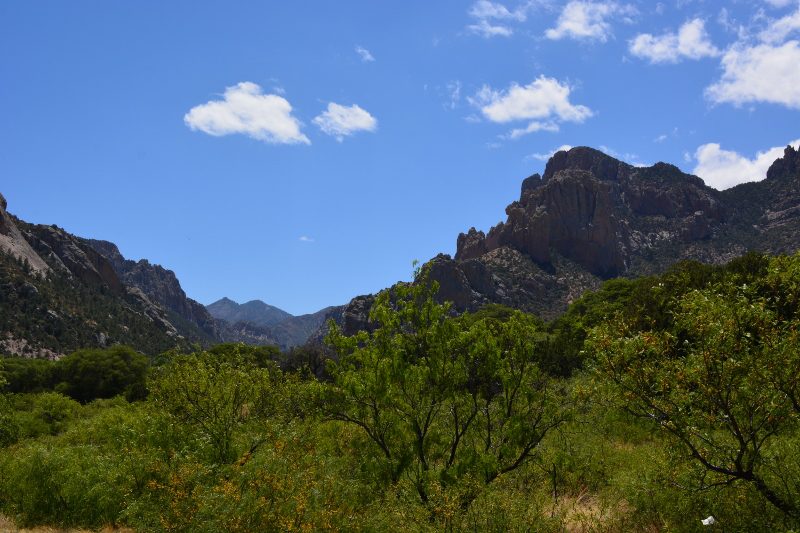
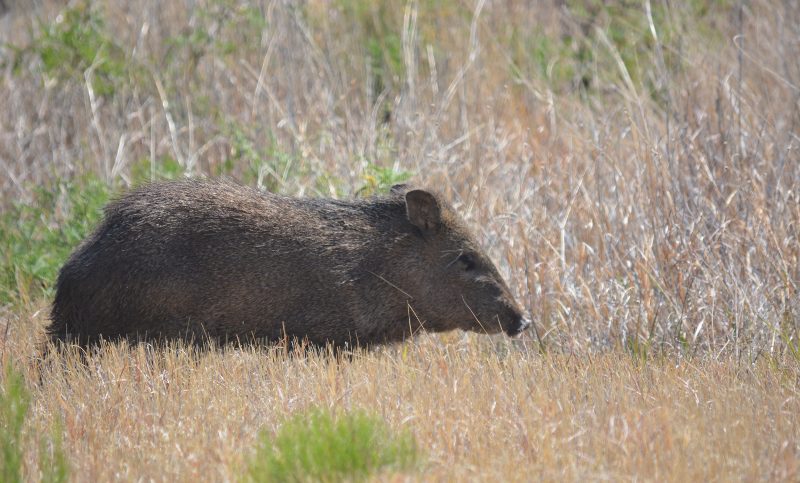
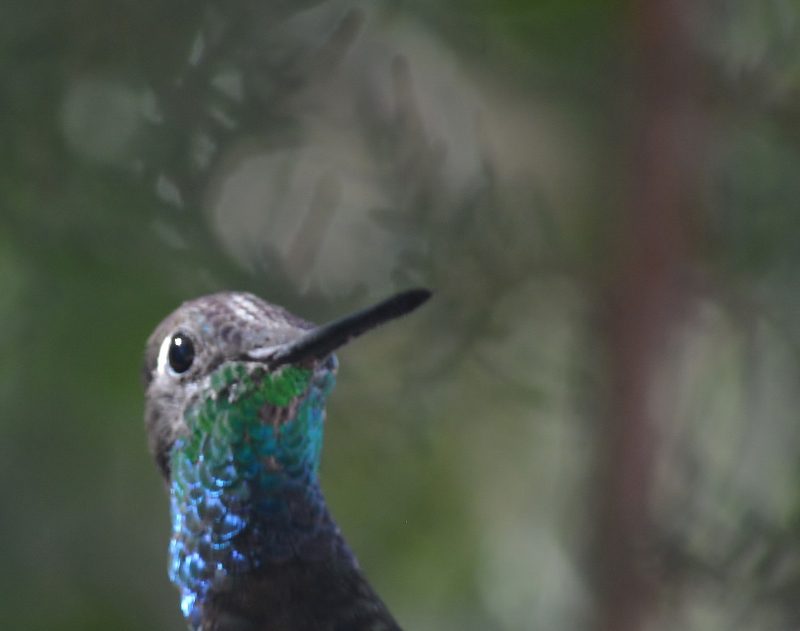
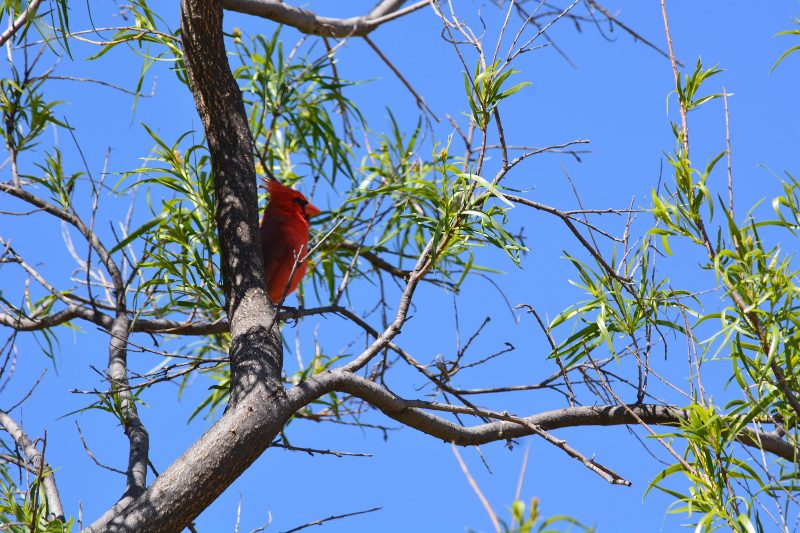
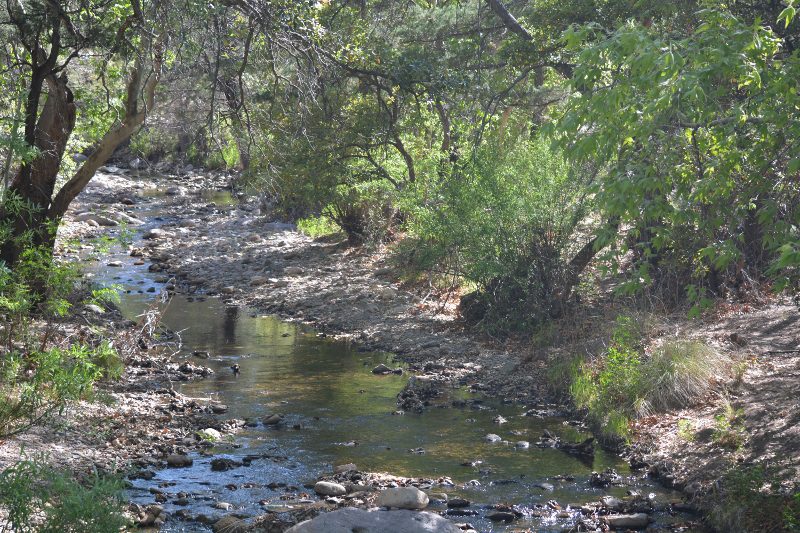
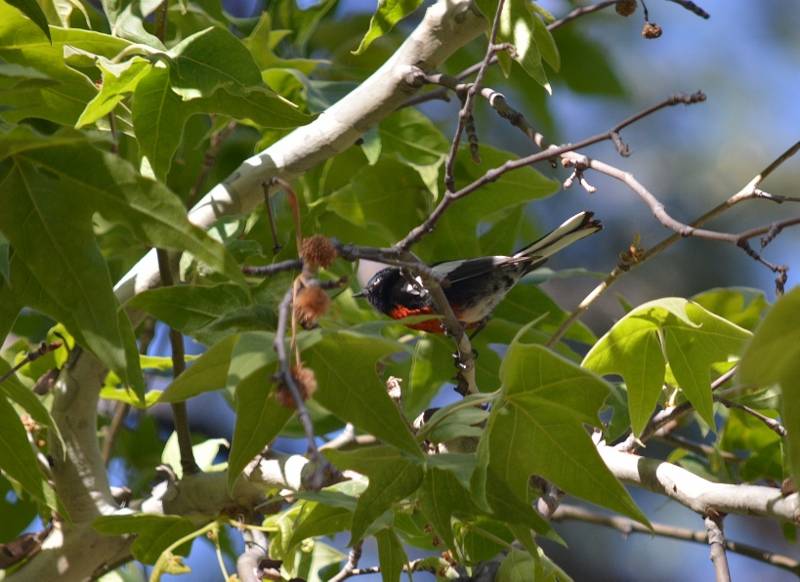
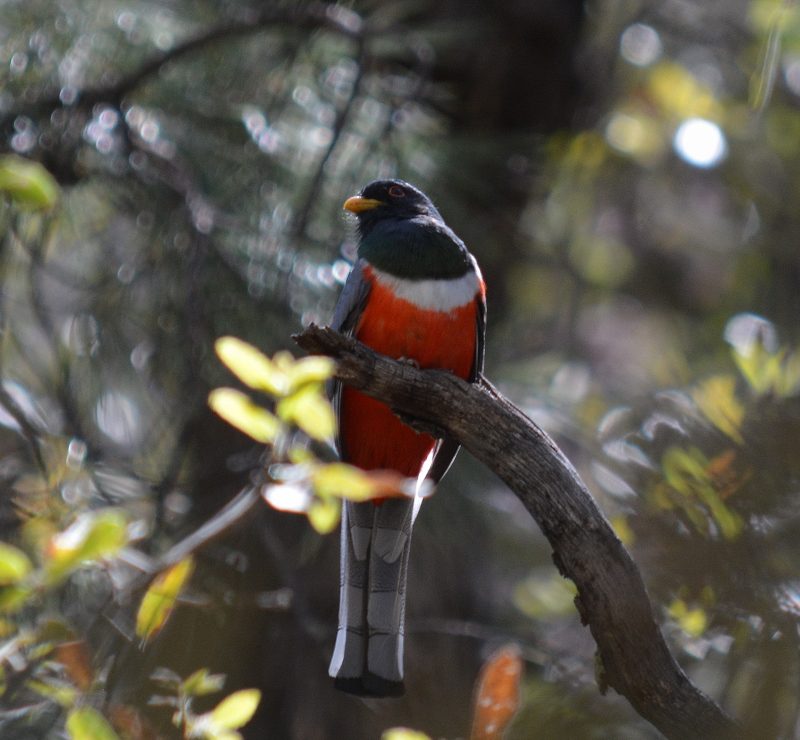
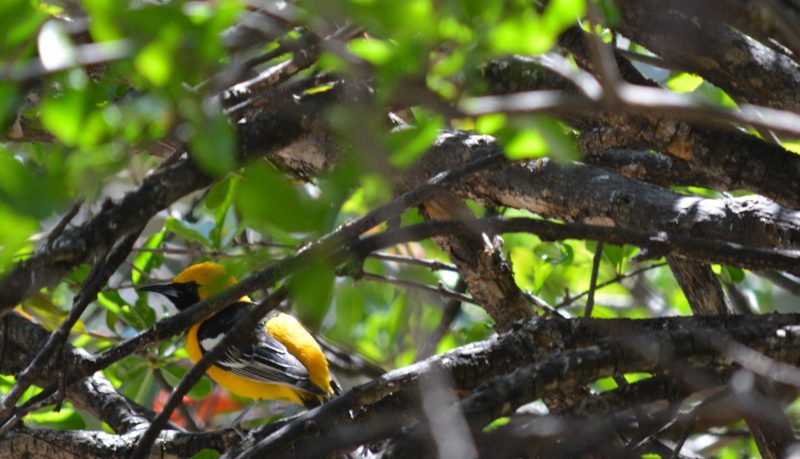
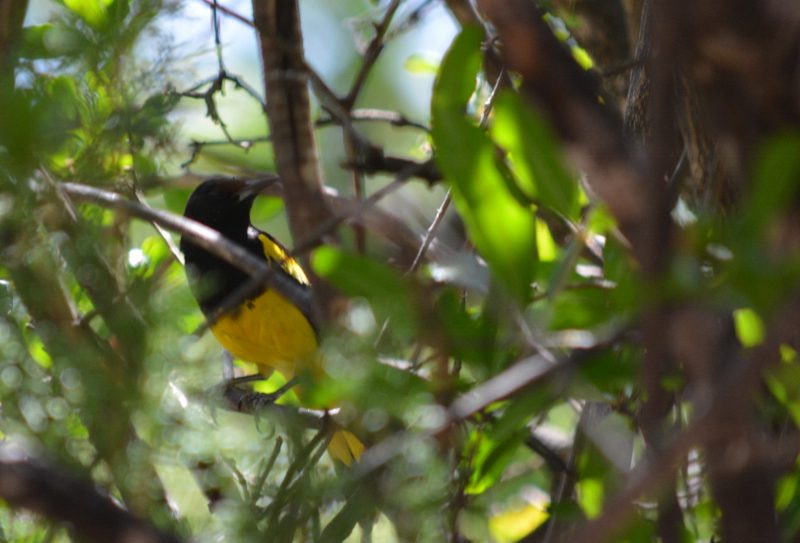
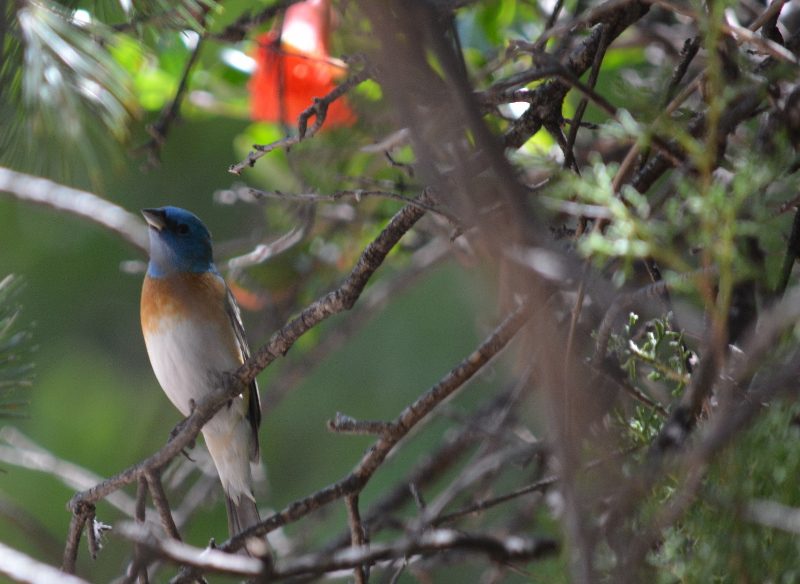
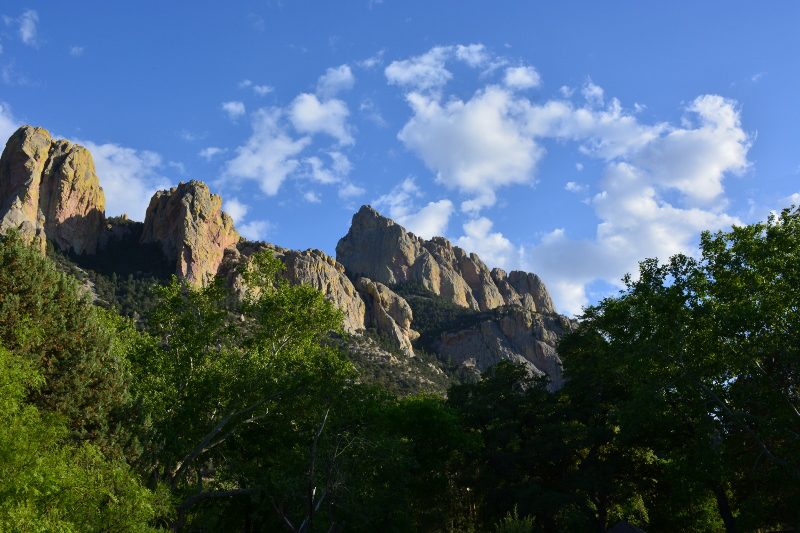




8 Comments
Your post is wonderful, as are the photos. Thank you so much for sharing it. Sounds like you and Kathy had a great adventure!
Yes, we did, Annie. I wish you could have been there. For those of us who love birds, this was the trip of a lifetime.
What a great and entertaining story, Author Callan.
Thanks so much, Jack. I really appreciate it.
Thank you so much for giving me I enjoyed the photos and comments very much. Bob visited these mountains years ago but did not see the Trogan.Thank you for the memories/
My pleasure, Bea. I’m glad you enjoyed it.
I saw a condor.
I’m envious, Clayton.